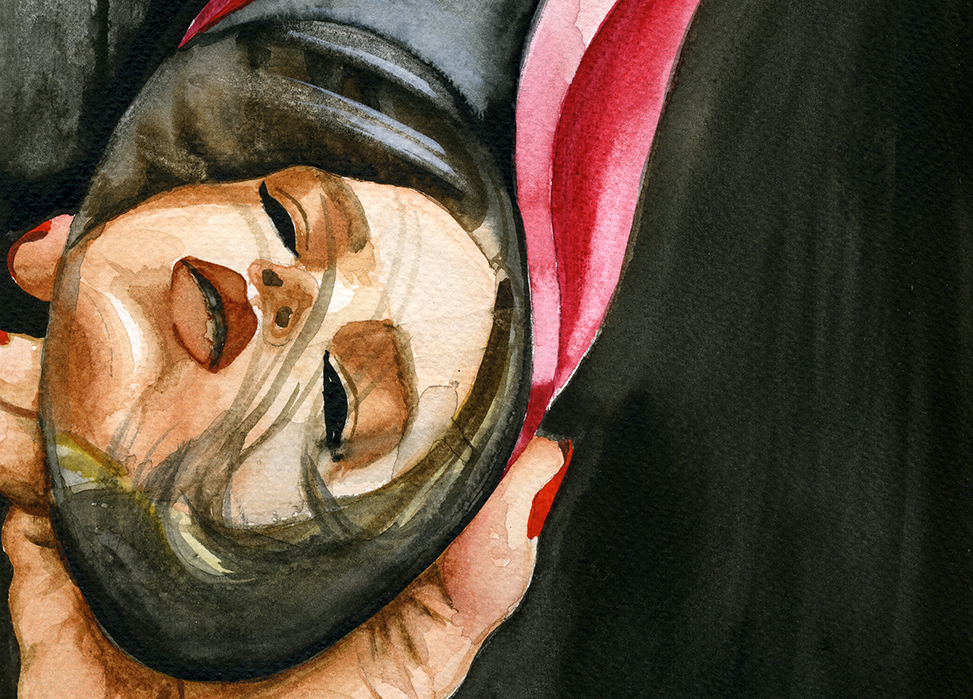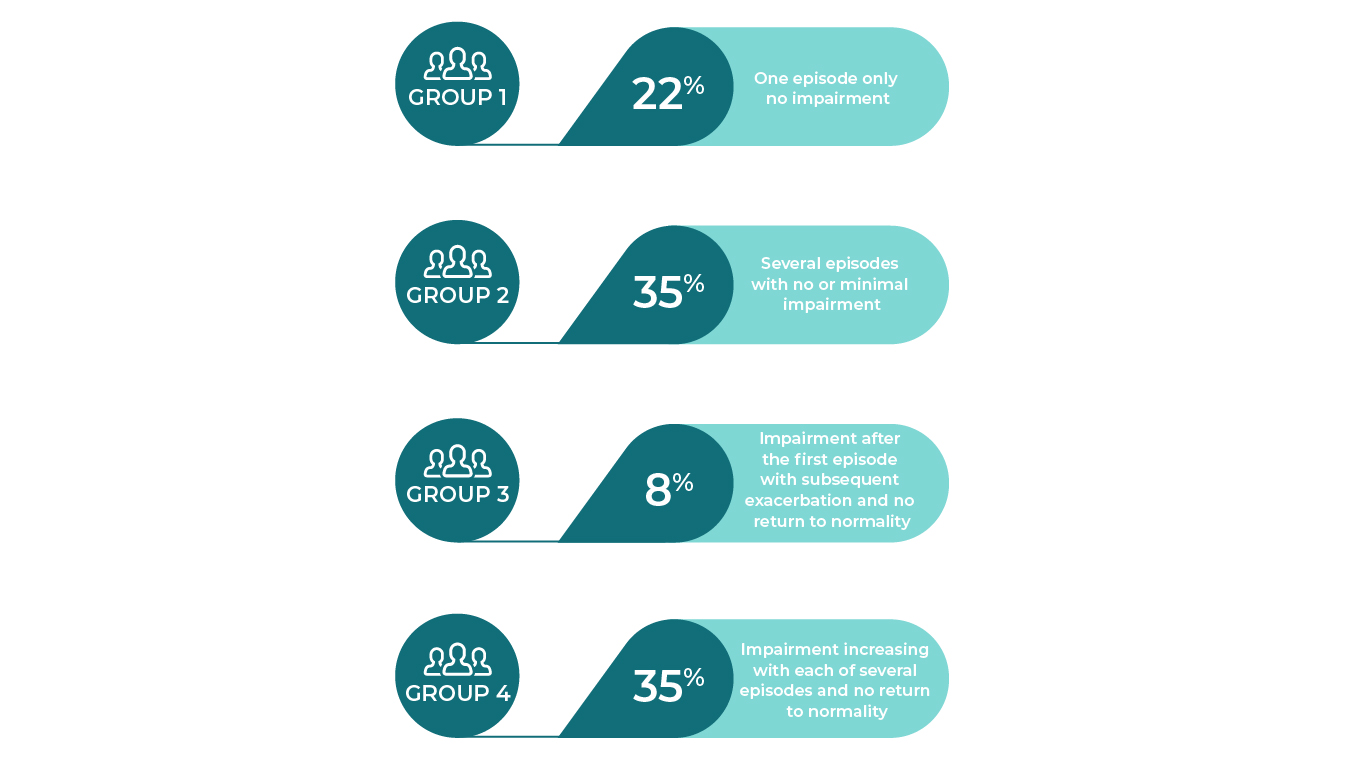Phases
Because schizophrenia doesn’t develop in a set pattern, the best way to describe the course of the disease is in phases.
There are three main phases – a prodromal phase, an acute phase and a stable phase. 1,2
The word prodromal refers to a period that happens before the first acute episode. The prodromal phase refers to the time before the first episode of psychosis and could last anywhere from a few days to 18 months.
During this phase, a person living with schizophrenia may display some unusual actions or behaviours, could have some memory problems, difficulty concentrating, or struggle communicating or joining in on social activities.2
After the prodromal phase, the acute phase will normally begin. During this time, a person living with schizophrenia may have several positive symptoms such as hallucinations or delusions, which may cause them a lot of distress.
The acute episode is normally resolved with pharmacological and psychological support, and symptoms will diminish or, in most cases, disappear completely. Some negative symptoms might remain (for example, reduced interest in daily activities or social events).
This phase could last for several years. This is what we call the stable phase.2
Some people may suffer from acute throughout their lifetime – this can, again, be managed with medication and psychological support.
Pattern
Based on the phases, it may look like schizophrenia has a very predictable pattern – but unfortunately, it has quite a unique course of disease, and each person may have very different patterns of episodes and types of symptoms. Acute episodes with positive symptoms may be very brief for some people or last a few years in other individuals. Some people living with schizophrenia never show an obvious prodromal period – the diagnosis will only happen following the first, sudden acute episode.2
In the image below, you can see how a person with schizophrenia may fall into any of these four patterns of disease. After one acute episode, one in five people will never show any more symptoms in their lifetime. Four in five people will instead have more acute episodes in the future. This doesn’t mean all future acute episodes will have the same intensity, and a very long time could pass between episodes.
References
- AIPC Overview of Schizophrenia. https://www.aipc.net.au/articles/an-overview-of-schizophrenia/ [Accessed July 2019]
- CPA Schizophrenia: A journey to recovery. https://www.schizophrenia.ca/docs/RoadtoRecoveryschzhioph-web.pdf [Accessed July 2019]
- Lieberman and First. N Engl J Med. 2018;379:270-80
- Shepherd et al. Psychol Med Monogr Suppl. 1989;15:1-46
How is schizophrenia diagnosed?
Diagnosis is not possible before the first acute psychotic symptoms according to up-to date guidelines. However detecting prodromal signs can be crucial in term
more…Schizophrenia and personal life
Everyone who has schizophrenia will experience it differently. Presentation and severity of symptoms can vary, however they are likely to affect the personal li
more…




